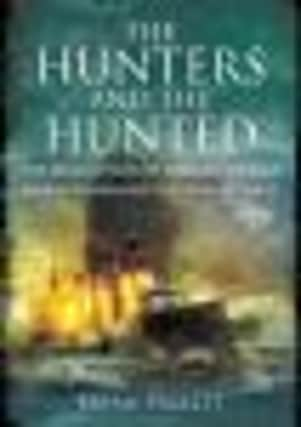Book review: The Hunters and the Hunted by Bryan Perrett


In 1914, the Imperial German Navy had a large number of surface warships deployed around the world. The threat that they posed was enormous and their elimination would soon become a matter of international urgency.
The ships, the men and the forgotten battles they engaged in 100 years ago have been brought to life in Lancashire military author Bryan Perrett’s fascinating book which takes us to the heart of a war fought on the high seas.
Advertisement
Hide AdAdvertisement
Hide AdFrom ocean chases and island raids to lucky escapes and dramatic blockades, Perrett covers the major actions of the war at sea and reveals how a concerted campaign led by the Royal Navy finally sunk the German menace.
U-boats were still in their infancy and their activities rarely extended beyond the North Sea, the Channel, Western approaches to Britain and the Mediterranean, but German colonies around the world provided bases for their warships.
Added to this, the Germans devised an ingenious system to replenish their fuel using coded grid-squares in remote ocean areas allowing them to stay at sea for long periods of time and replenish their stocks with provisions taken from victim ships.
It was up to the Royal Navy, the largest and most powerful in the world in 1914, to police the oceans and take on the challenge posed by the Imperial German Navy, not least to the import of food and fuel supplies.
Advertisement
Hide AdAdvertisement
Hide AdThe early years of the war would witness a maritime game of cat-and-mouse in which those who hunted the merchantmen were themselves hunted by Allied warships.
Perrett’s superbly detailed book covers all the major actions including the escape of the Goeben and Breslau to Turkey, where they became units of the Turkish Navy serving in the Black and Aegean Seas.
The remarkable cruiser Emden also caused an Allied setback when she detached from the German East Asia Squadron, sank a Russian cruiser, a French destroyer and 21 merchant ships and destroyed cargo valued at £3million. She was finally cornered and sunk by the Australian cruiser Sydney while raiding the Cocos Islands.
The German East Asia Squadron, which included the armoured cruisers Schanhorst and Gneisienau and several light cruisers, sailed across the Pacific to the west coast of South America where they sank two British cruisers, the Monmouth and Good Hope, before themselves being sunk off the Falkland Islands.
Advertisement
Hide AdAdvertisement
Hide AdIn Africa, the Konigsberg operated from the German colony of Tanga and after sinking a British cruiser, she hid in the upper reaches of the Rufiji River. She was finally destroyed by the indirect fire from two Royal Navy Monitors after a lengthy naval and air campaign by British forces.
By the middle of 1915, the high seas had been mostly cleared of German surface warships, but three armed German ships dominated Lake Tanganyika. Two British armed motor boats were shipped to the West African coast from England and made their way by river and overland haulage to the lake, a 400 mile journey.
The result was the destruction of the German lake boats and the invasion of Tanganyika by British forces. This operation became the inspiration for C.S. Forester’s novel The African Queen and the film based on the book.
The Hunters and the Hunted is a breathtaking story of daring and adventure, with examples of heroics, chivalry and some foul deeds from both sides. Perrett sheds new light on a forgotten chapter of the Great War and reminds us again of just how vast and all-encompassing was this terrible conflict.
(Pen & Sword, hardback, £18.99)